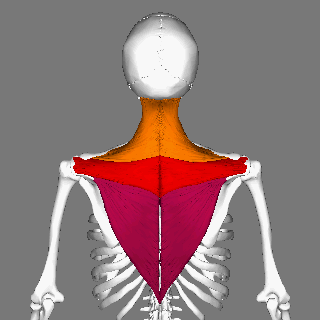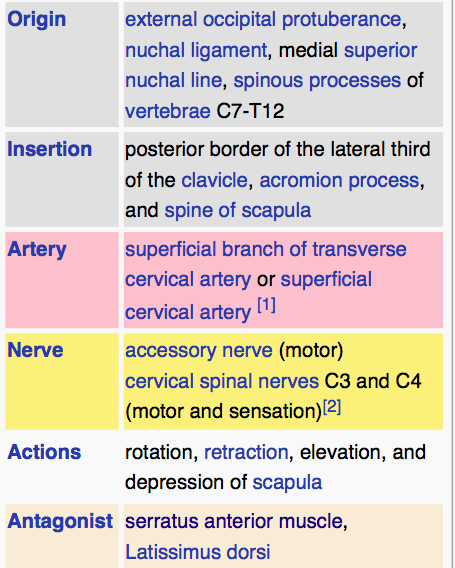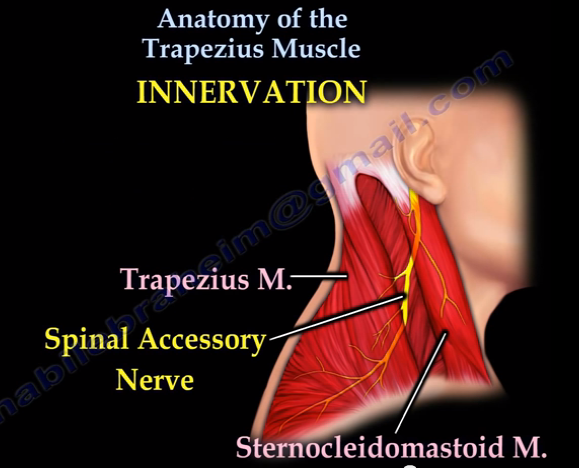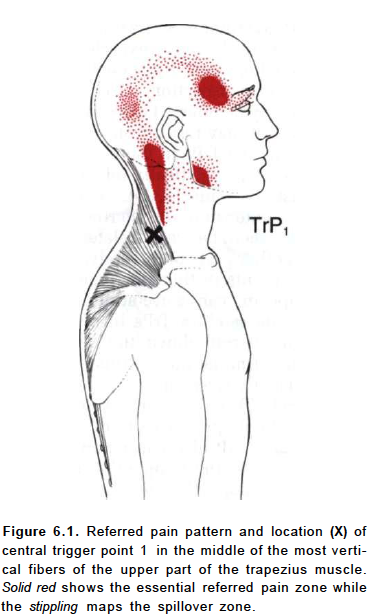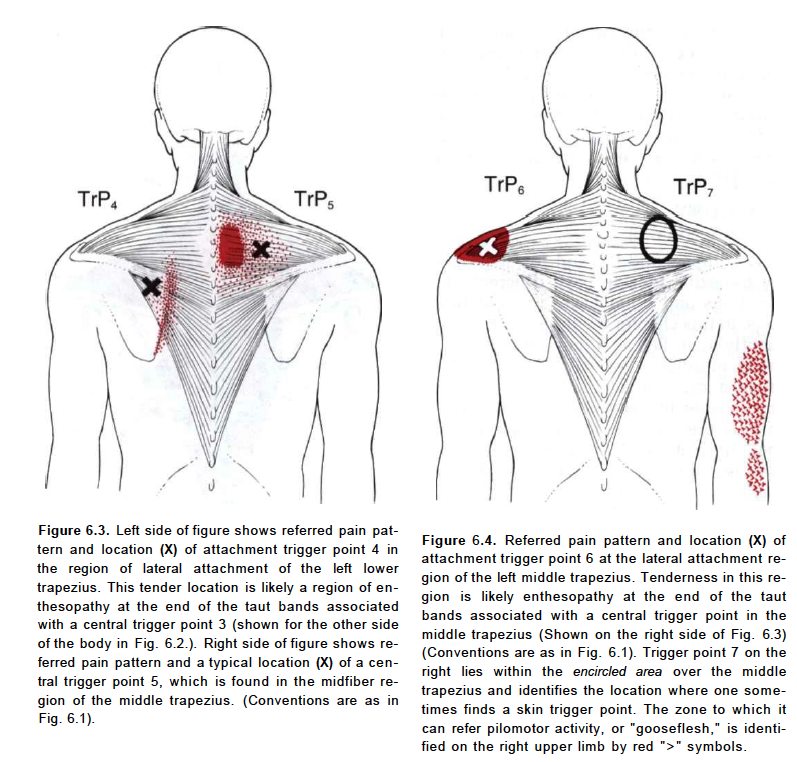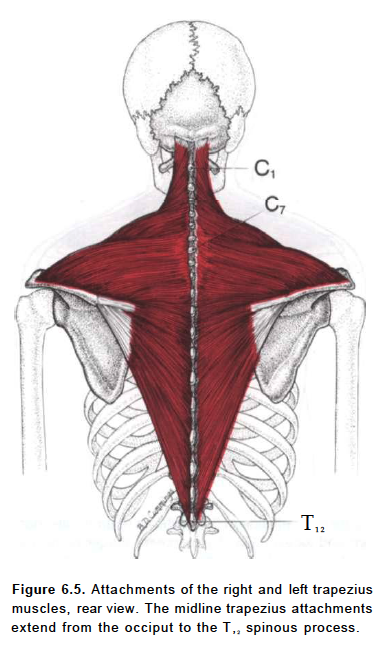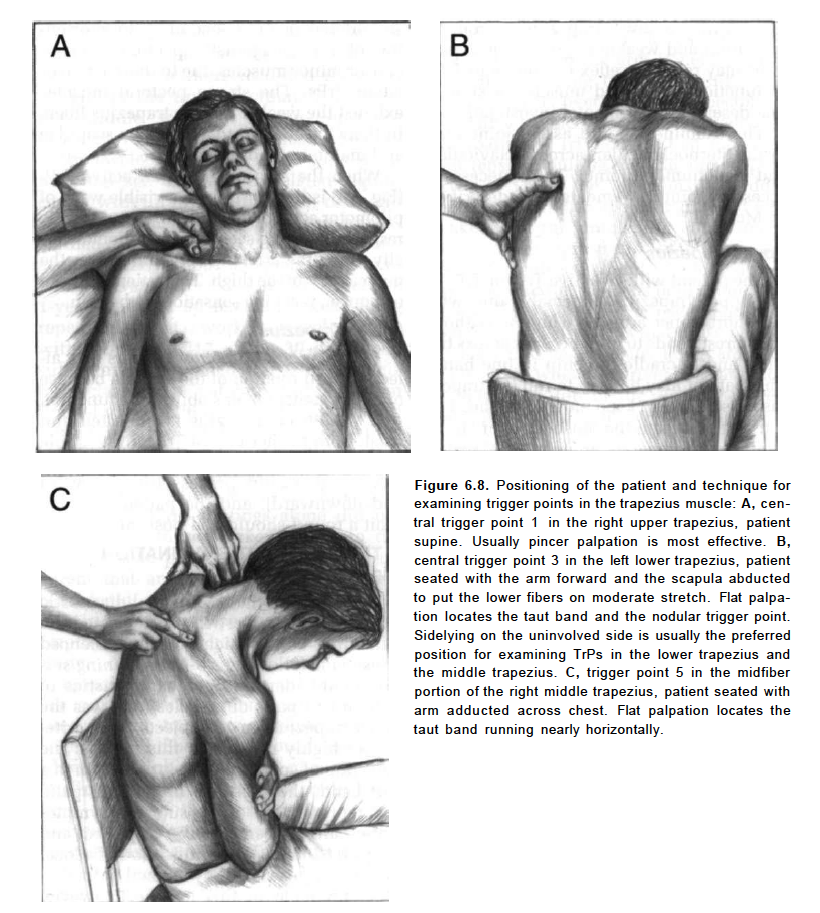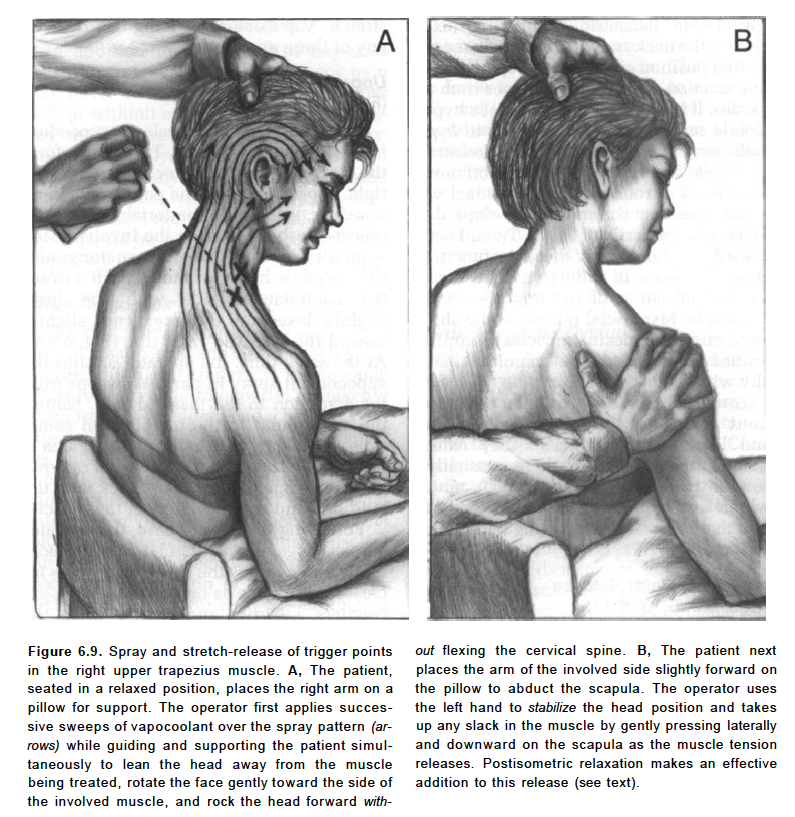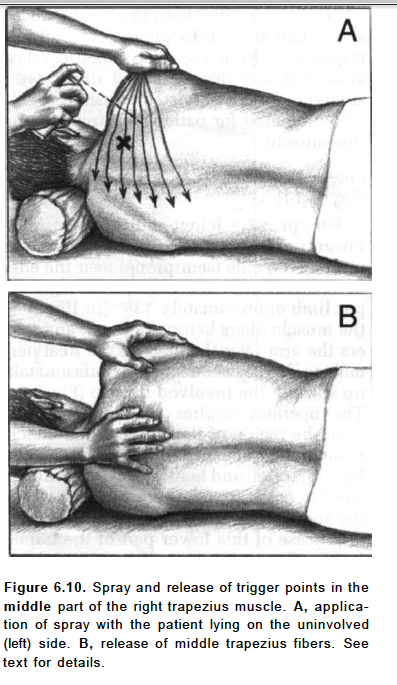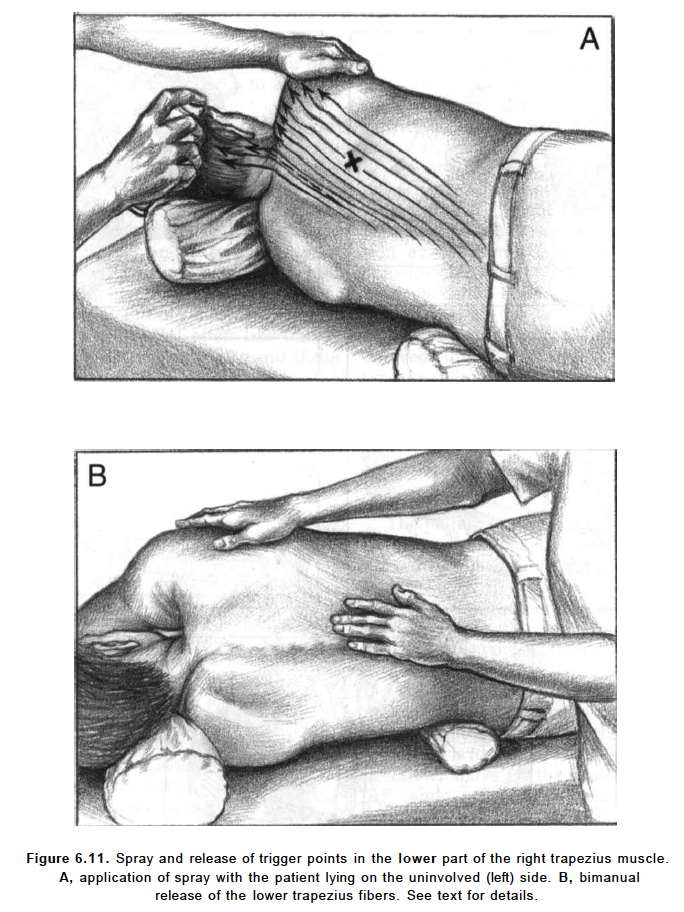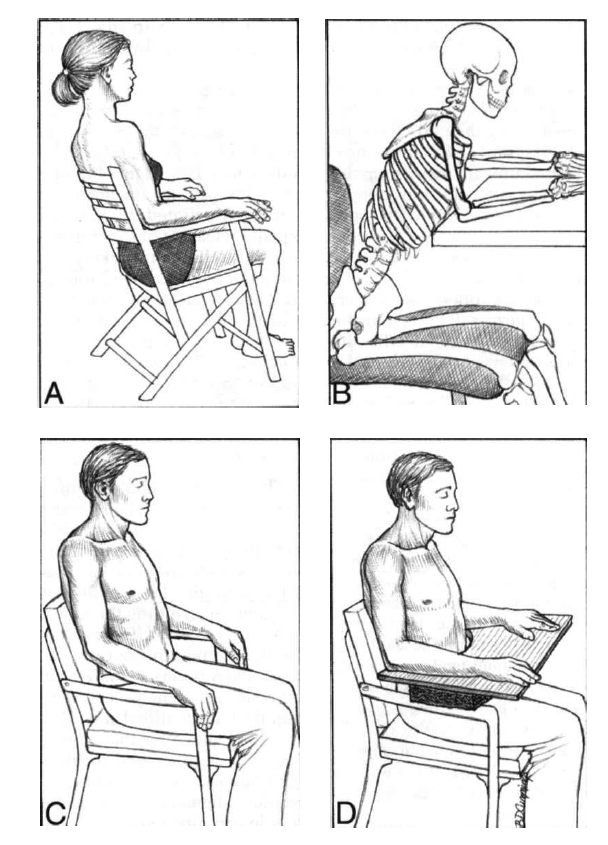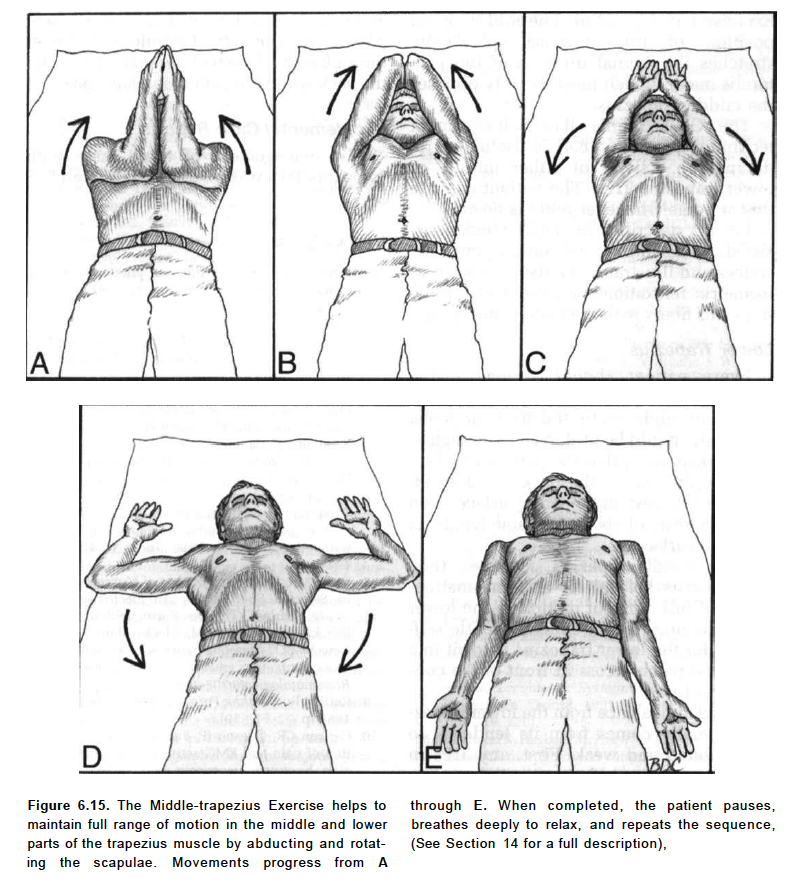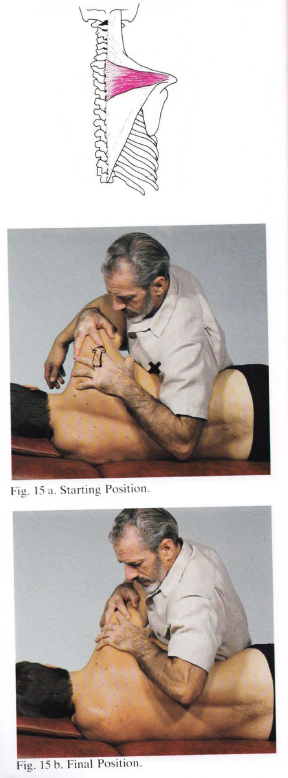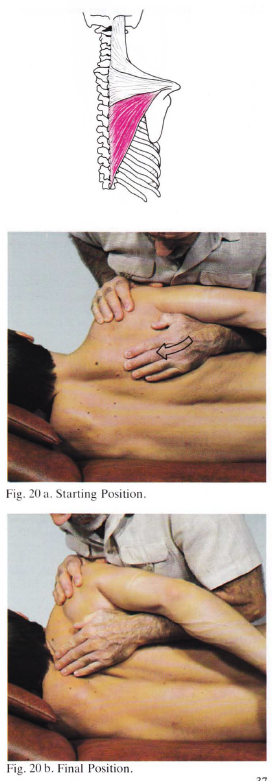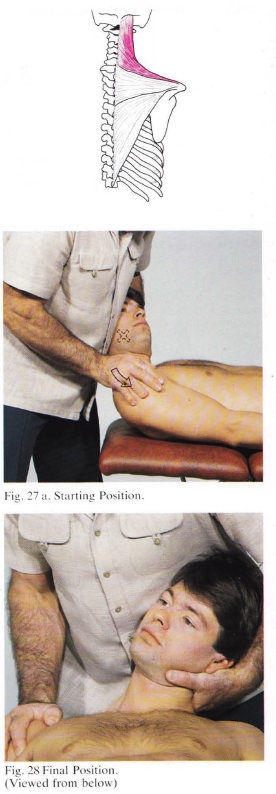앞으로 만드는 모든 근육자료는 반드시 반드시 "입체적인 동영상, 그림"사진으로...
그렇지 않으면 평면으로 보게 되면서 치료에 올바른 상상력을 방해
- lower trapezius는 전거근과 함께 견갑골 안정화 근육
1. 어깨의 거의 모든 문제는 견갑골이 protraction되면서 발생
2. 견갑골을 중립위치(neutral position)으로 되돌려 놓는 "견갑골 안정화운동(stability exercise)"이 필수
3. 견갑골 중립위치 안정화운동은 "전거근과 하부 승모근" 강화
4. 견갑골 시계운동의 등쪽 4시방향이 중요
5. 상부승모근은 팔을 지지하는 근육
6. 중부승모근은 견갑골을 후인하는 근육
7. 하부승모근은 견갑골을 내측으로 하강시키는 근육 - 그래서 전거근과 함께 견갑골 안정화 근육
8. 부신경과 C3-4 신경근 지배
9. 삼각근과 함께 Throwing 근육
10. 길항근은 전거근과 광배근
11. 승모근 운동법 - 맨 아래 그림 참조
In human anatomy, the trapezius (/trəˈpiːzi.əs/) is a large superficial muscle that extends longitudinally from the occipital bone to the lower thoracic vertebrae and laterally to the spine of the scapula (shoulder blade). Its functions are to move the scapulae and support the arm.
The trapezius has three functional regions: the superior region (descending part), which supports the weight of the arm; the intermediate region (transverse part), which retracts the scapulae; and the inferior region (ascending part), which medially rotates and depresses the scapulae.
The trapezius muscle resembles a trapezium (trapezoid in American English), or diamond-shaped quadrilateral. The word "spinotrapezius" refers to the human trapezius, although it is not commonly used in modern texts. In other mammals, it refers to a portion of the analogous muscle.
The superior or upper fibers of the trapezius are formed from the external occipital protuberance, the medial third of thesuperior nuchal line of the occipital bone (both in the back of the head), and the ligamentum nuchae. From this origin they proceed downward and laterally to be inserted into the posterior border of the lateral third of the clavicle.
The middle fibers of the trapezius arise from the spinous process of the seventh cervical (both in the back of the neck), and the spinous processes of the first, second, and third thoracic vertebrae. They are inserted into the medial margin of theacromion, and into the superior lip of the posterior border of the spine of the scapula.
The inferior or lower fibers of the trapezius arise from the spinous processes of the remaining thoracic vertebrae (T4-T12). From this origin they proceed upward and laterally to converge near the scapula and end in an aponeurosis, which glides over the smooth triangular surface on the medial end of the spine, to be inserted into a tubercle at the apex of this smooth triangular surface.
At its occipital origin, the trapezius is connected to the bone by a thin fibrous lamina, firmly adherent to the skin. The superficial and deep epimysia are continuous with an investing deep fascia that encircles the neck and also contains both sternocleidomastoid muscles.
At the middle, the muscle is connected to the spinous processes by a broad semi-elliptical aponeurosis, which reaches from the sixth cervical to the third thoracic vertebræ and forms, with that of the opposite muscle, a tendinous ellipse. The rest of the muscle arises by numerous short tendinous fibers.
Innervation[edit]
Motor function is supplied by the accessory nerve (CN XI). Sensation, including pain and proprioception, travel via the ventral rami of the third (C3) and fourth (C4)cervical nerves. Since it is a muscle of the upper limb, the trapezius is not innervated by dorsal rami despite being placed superficially in the back.
It is possible to feel the muscles of the superior trapezius become active by holding a weight in one hand in front of the body and, with the other hand, touching the area between the shoulder and the neck.
Function[edit]
Contraction of the trapezius muscle can have two effects: movement of the scapulae when the spinal origins are stable, and movement of the spine when the scapulae are stable. Its main function is to stabilize and move the scapula.
Scapular movements[edit]
The upper and lower fibres tend to rotate the scapula around the Sternoclavicular articulation so that the acromion and inferior angles move up and the medial border moves down. This rotation is in the opposite direction to that produced by levator scapulae and the rhomboids.
The middle fibres retract the scapula.
Spinal movements[edit]
When the scapulae are stable a co-contraction of both sides can extend the neck.
Exercises[edit]
- The upper portion of the trapezius can be developed by elevating the shoulders. Common exercises for this movement are any version of the clean, particularly the hang clean.
- Middle fibers are developed by pulling shoulder blades together. This adduction also uses the upper/lower fibers too.
- The lower part can be developed by drawing the shoulder blades downward while keeping the arms almost straight and stiff.
It is mainly used in throwing, with the deltoid muscles. The upper and lower trapezius fibers also work in tandem with the serratus anterior to upwardly rotate the scapulae, such as during an overhead press. When activating together, the upper and lower fibers also assist the middle fibers (along with other muscles such as the rhomboids) with scapular retraction/adduction.
Muscle imbalances, which can heavily affect posture and compromise shoulder health, can result if all three sections of the trapezius are not developed equally.[3]
승모근 기능부전
- 부신경 마비에 의함.
승모근 Trp에 의한 referred pain pattern 탐구
- 상부승모근은 눈동자 바깥 위쪽부의 통증, 교근 부위 연관통증
- 중부승모근은 상완삼두근 부위 연관통
에반스의 승모근 중부섬유 isolated stretching
에반스의 승모근 하부섬유 isolated stretching
에반스의 승모근 상부섬유 isolated stretching
